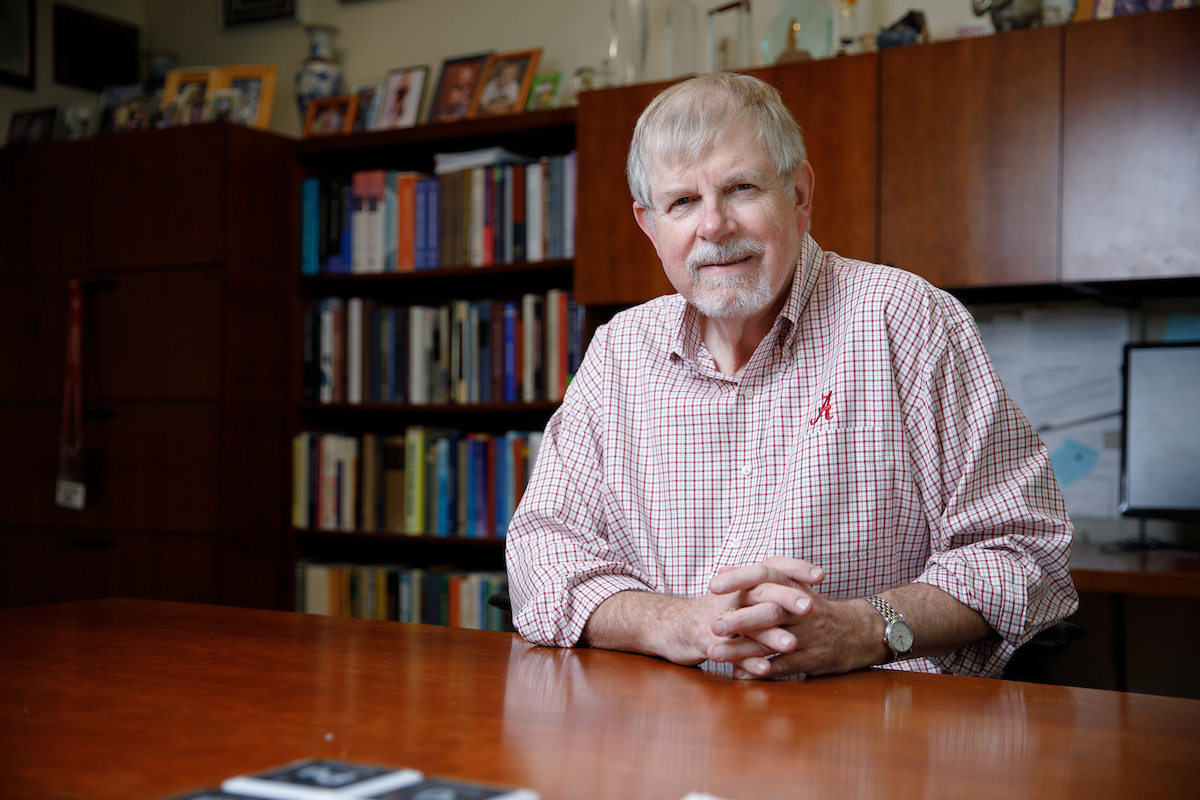
TUSCALOOSA, Ala. – An innovative form of hydrogen fuel being developed by researchers at The University of Alabama could be used to support long-range, precision-fire missiles in protecting against potential threats to the United States.
UA is receiving about $9 million from the U.S. Department of Defense as part of a four-year, $11 million research project to further develop a novel hydrogen fuel. Early work on the fuel shows promise to allow missiles to maintain high speeds during flight, potentially neutralizing enemy missiles bound for the U.S. before they cross land.
UA is working with Sentient Corporation in Huntsville, as part of a Small Business Innovation Research contract awarded by the U.S. Army Combat Capabilities Development Command Aviation & Missile Center based out of Redstone Arsenal in Huntsville. Technology matured under this effort may be transferred to the US Army’s Long Range Precision Fires missile program.
The funding will provide for a state-of-the-art testing facility at UA for phase-changing hydrogen fuel research.
“The new program leverages capabilities and expertise the University has built from years of working on hydrogen fuel applications, so we’re not starting from scratch,” said Dr. David Dixon, the Robert Ramsay Professor of Chemistry. “Hydrogen is an optimal fuel for high-speed combustion applications that the Army is evaluating for air-breathing missile application.”
Dixon began working on the problem of hydrogen fuel storage nearly 18 years ago with support from the U.S. Department of Energy, tackling the issue of using hydrogen bonded to other atoms in a chemical, instead of its natural state as a gas. As part of a project funded by the U.S. Department of Defense, Dixon’s lab developed a hydrogen fuel that can exist as a solid at room temperature and change to liquid at just above 100-degrees Fahrenheit to release the hydrogen as gas to ignite as a fuel.
The innovation stores the hydrogen in chemical bonds in the compound ammonia borane, where it is stable until heated and ignited with oxygen to create water and release energy. The fuel’s capabilities mean it can conform to any shaped storage tank with a long shelf-life that does not require high-pressure storage of gas or extremely low temperatures for pure hydrogen liquid.
“Defensive missiles need to be fast and have extended range capability so as to hit its target well outside the protected area, to minimize/negate damage within the area being protected,” Dixon said.
Support from the Army and collaboration with Sentient will allow UA researchers to continue development to the point of realistic testing in a wind tunnel to demonstrate the ability of different fuel formulations to achieve the high-speed combustion necessary for the missile defense applications.
The research team will also work on another application of the fuel technology – as power for mobile fuel cells – with a fuel whose by-products can be recycled. The fuel cells could be used to power a soldier’s wearable equipment or other battery-based technologies for ground and air transportation.
The work will involve a team of post-doctoral researchers, graduate students and undergraduate students working on cutting-edge technology and research methods.
Along with Dixon, UA researchers involved include Dr. Shane Street, associate professor of chemistry and biochemistry; Dr. Kevin Shaughnessy, professor of chemistry and biochemistry; Dr. Paul Rupar, associate professor of chemistry and biochemistry; Dr. James Harris, associate professor of chemical and biological engineering; Dr. Tonya Klein, associate professor of chemical and biological engineering; Dr. Ajay Agrawal, the Robert F. Barfield Endowed Chair in Mechanical Engineering; and Dr. Semih Olcmen, professor of aerospace engineering and mechanics.
U.S. Army Combat Capabilities Development Command Aviation & Missile Center provides increased responsiveness to the nation’s warfighters through aviation and missile capabilities and life cycle engineering solutions.
Contact
Adam Jones, UA communications, 205-348-4328, adam.jones@ua.edu
